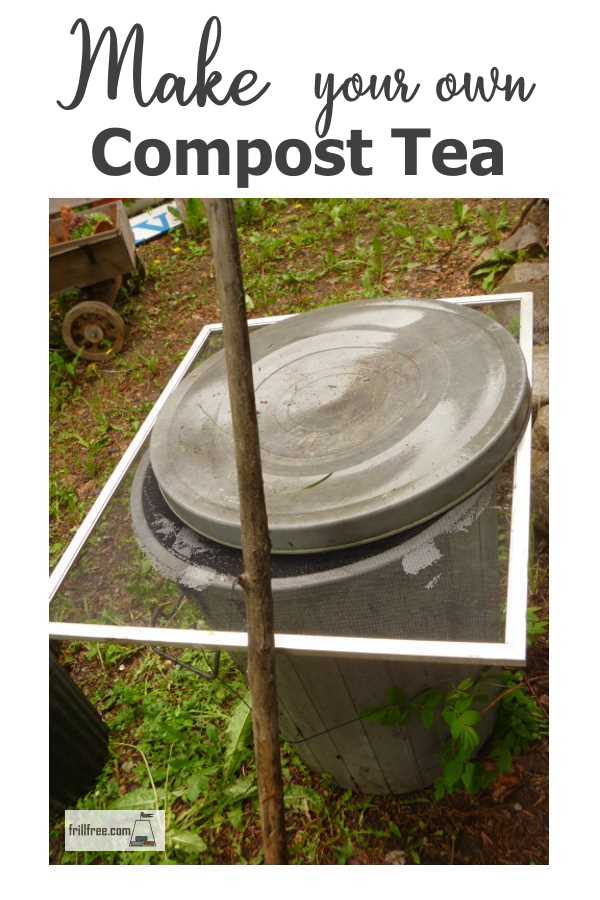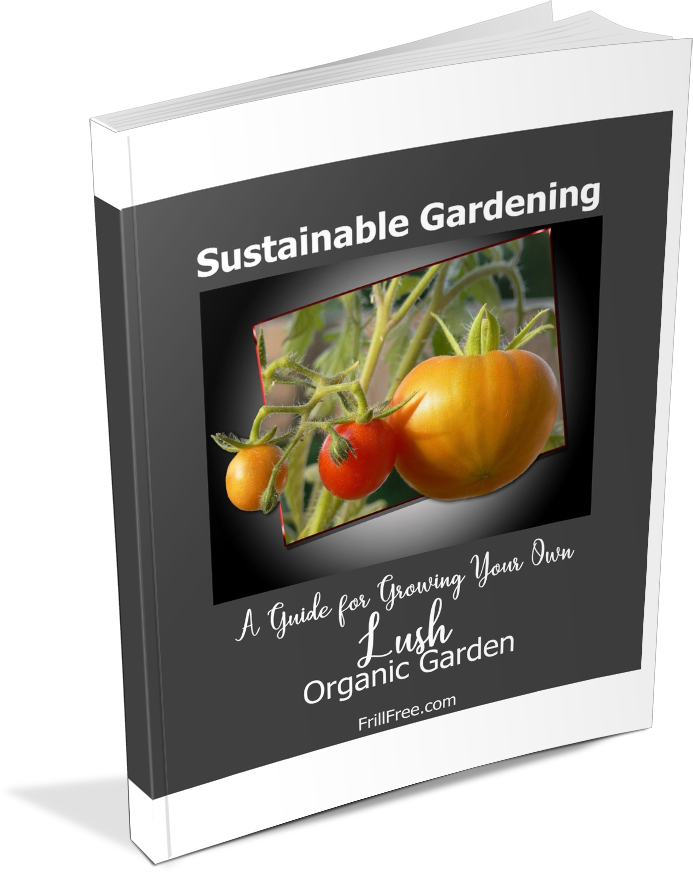- Homesteading
- Natural Fertilizer
- Make Compost Tea
How to Make Compost Tea
An Easy and Economical Nutrient Source
There are several ways to make compost tea, ranging from a bucket full of dried weeds covered and steeped in rain water, to expensive compost tea ‘brewers’ with special aeration devices.
I prefer to keep it simple, and cheap.
Here’s what my system of making compost tea entails:
- A couple of shovels of well aged compost from
the previous year;
- A ‘tea bag’, which can be an old t-shirt, a piece of plastic
bug screen from a window, or a couple of layers of spun bonded row cover;
- A large garbage can or bin, bucket or wash tub, preferably with a lid to hold the
brew, and lastly;
- A stick to stir it with.
Use a dark container, not a clear one - light can cause algae to grow.
Always cover your container, both to keep mosquitoes from laying their eggs, and also to prevent curious squirrels or other creatures from drowning in the tea.
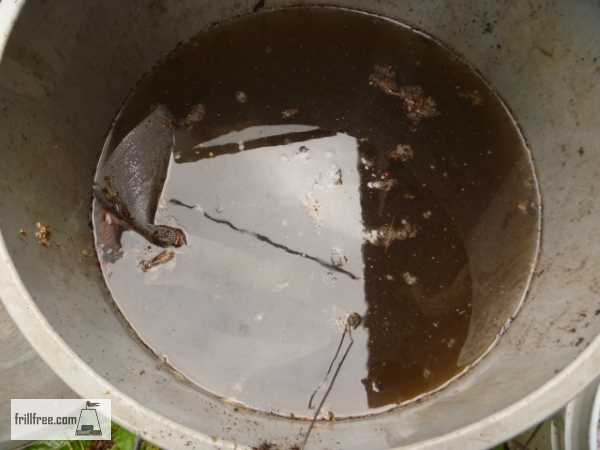 Be prepared for the fermenting liquid to smell, sometimes quite strongly
Be prepared for the fermenting liquid to smell, sometimes quite stronglyBe prepared for the fermenting liquid to smell, sometimes quite strongly.
Stirring vigorously to add air to the mixture will help prevent this.
Other ingredients for compost tea include molasses, which is thought to attract the spores of local yeasts.
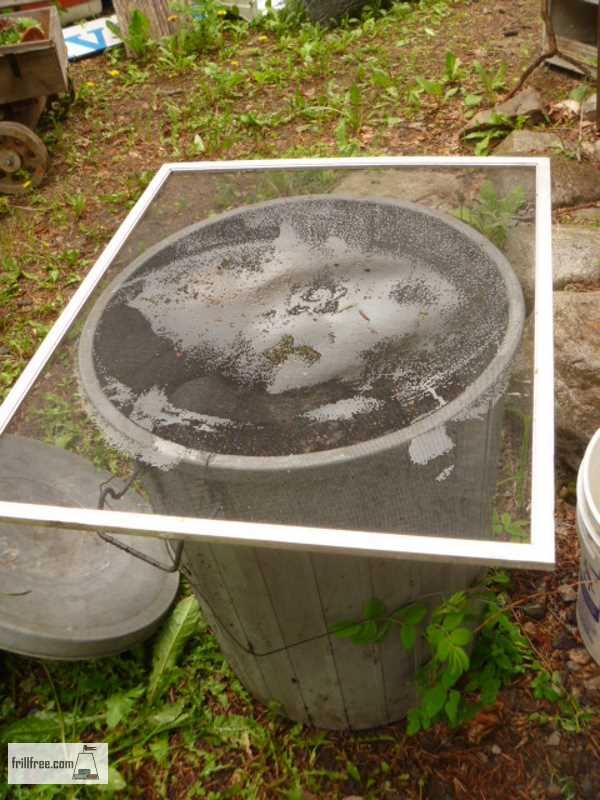 Screen will keep out the insects...
Screen will keep out the insects...Yeast provides Vitamin B compounds which are important nutrients for many plants, as well as to feed the micro herd.
I make compost tea to feed pretty much everything in my garden.
Growing vegetables, especially those that like a richer soil and higher nutrition like tomatoes and squash do really well with a regular sprinkling of compost tea made with either chicken manure compost or that made with kitchen scraps.
A cupful in the planting hole of most crops will give them a head start.
You can feed the soil, or feed the crops with a foliar spray, as they can absorb the nutrients right through their leaves.
Many gardeners swear that their crops are more disease resistant and healthier than crops grown with just soil borne fertilizers.
Don’t forget to feed your mulch.
If you’ve got a little patch of buckwheat, ryegrass or other green plants that you cut for mulching, it will benefit from the occasional sprinkle with compost tea too, plus release those valuable nutrients into the soil when they're cut for mulch.
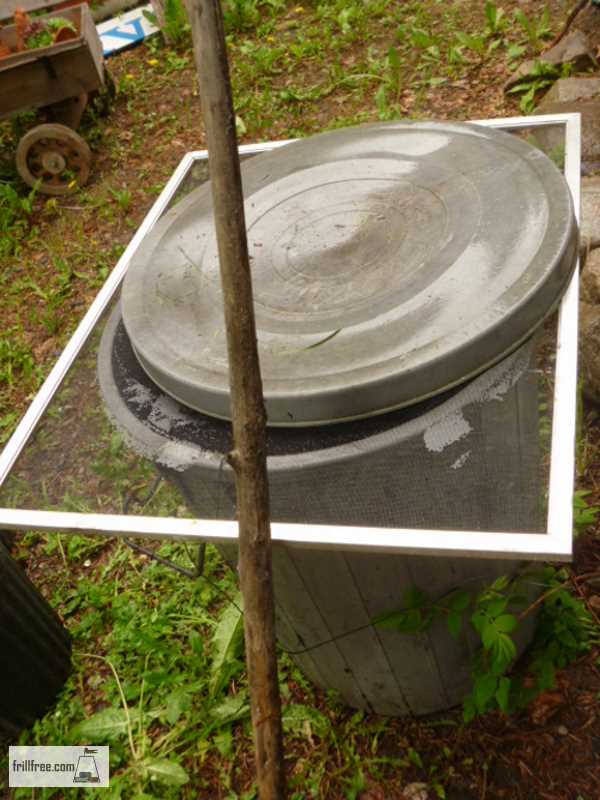 ...and a lid will keep out the bigger critters.
...and a lid will keep out the bigger critters.Important things to remember about making compost tea:
- Stir often, at least once a day.
- Keep covered to prevent animals from falling in.
- Keep screened to keep mosquitoes out.
- Dilute it 10 parts water to one part compost tea when you’re
ready to use it.
- Don’t use it on leafy crops, as this method of fertilization,
even though it’s natural, can be a source of E. coli or Salmonella.
- I recommend that you only use this type of compost tea on young plants that are in a fast growth stage, before they start to produce fruit.
Mulching or top dressing with either a leguminous green manure or alfalfa pellets scattered around the base of the plant is a safer way of fertilizing those plants that are fruiting – it’s not as crucial to provide a high nitrogen source at that stage of growth, mostly irrigation.
- When the tea bag is exhausted after a few times of adding more water to it, you can use the dregs as a top dressing, or to give a cold compost pile a boost.
There will still be nutrients left behind.
So, what’s stopping you from making a batch of compost tea?
Start today, and in a couple of weeks you’ll have a rich source of nutrients, yeasts and bacteria specially customized to your conditions.
Frequently Asked Questions;
Compost tea - if it is the liquid accumulated at the bottom of the compost
heap, can it be used directly on plants? I forgot the lid off my
compost bin, which does not have drainage holes. It filled with rain
water. Is that compost tea?
Compost tea - if it is the liquid accumulated at the bottom of the compost
heap, can it be used directly on plants? I forgot the lid off my
compost bin, which does not have drainage holes. It filled with rain
water. Is that compost tea?
Dilute this 1 part concentrate to 10 parts water and test it on a plant that you don't care about first. If it improves the health of the plant, congratulations - you've developed an easier way yet!
How long will it take to make compost tea?
How long will it take to make compost tea?
In the summer, or when it's warm out, it won't take as long as in winter when it's cold. Why? This is a fermenting process, which will slow down at cooler temperatures. Don't worry, when it warms up again it will carry on at it's own pace.
Can I use a glass container, or does it have to be plastic?
Can I use a glass container, or does it have to be plastic?
Plastic is preferred because it's a bit pliable, not like glass which could break, but it is totally your preference. When I'm making a large quantity for outdoors use, I use a garbage can (plastic) but for indoors, it is okay to use any recycled container, like a milk bottle.
If you just want a small amount for your house plants, use the smaller container. Don't put the lid on too tightly, allow it room to breathe until it's finished the process.
